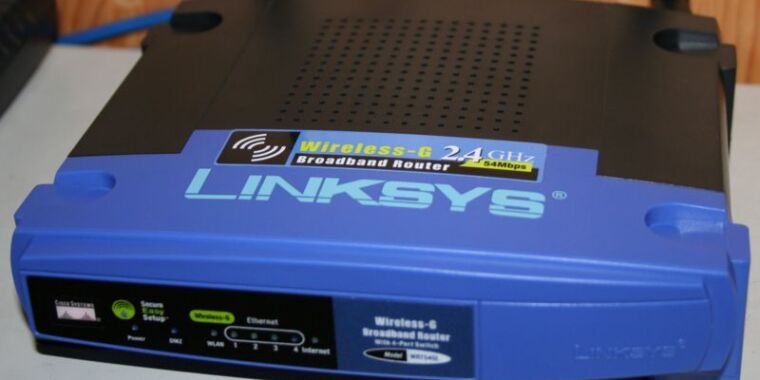- cross-posted to:
- technology@lemmy.ml
- cross-posted to:
- technology@lemmy.ml
I was the lead engineer on an Openwrt router for 2 years at my old job. Their documentation is complete and utter shit, but their design is extremely intuitive. Whenever I said to myself, “hell, let’s just try this and see if it works,” it had an insanely high success rate.
I didn’t know Lua going into this project, but when I left the company, it made me really wonder why more people don’t use Lua. It’s a really nice language.
I really enjoyed having my own open source router that I could just drop new features into by adding packages and recompiling. I was sad when I had to send all my dev units back.
I’m curious what you’re really referring to with Lua. (casual hobbyist here) Is that the UCI implementation stuff? I tried to use my intermediate Linux desktop user experience with bash in OpenWRT, but geez that is frustrating without all the bash extras I’m accustomed/detailed help/manual pages. That on top of trying to figure out NFTables is still a bit too much for my little brain to compress. I just started messing with UCI commands so I haven’t looked under the hood on that one.
Any ideal device recommendations for fun chipsets to seek out and play with for embedded stuff in this space?
The web UI backend stuff is all done in Lua. So receiving and processing forms was all Lua. My main feature that I implemented was a REST API that was called from another product that my company sold. So I had to do all the REST API processing and data validation and whatnot in Lua.
I don’t really have recommendations, because I really only knew our product. If I knew what I get, I probably would have got that instead of the Asus router that I ended up with when I had to return my work materials.
You should try awesome wm
I pretty successfuly ran a combo of TP-Link with OpenWRT connected with cable to a cheap dumb Edimax, which in turn was connected through wifi to downstairs Zyxel ADSL router from O2 ISP.
Essentially the Edimax bridged the internet (there was only one place where the signal was strong enough) from downstairs, sent it to the TP-Link and that one spread wifi on the upstairs floor (so we could use phones/notebook) and my brother’s and mine desktop PCs were connected to it by cable. A bit of an overcomplicating simple problem, but it worked (otherwise we would either have no wifi or would have to buy a different router with 2 separate WiFi chips).
What were your must have packages?
OpenVPN server was my number 1. Being able to VPN back into my home from anywhere in the world was amazing. I can’t really remember any other, since it was more than a few years ago.
Nowadays Wireguard is a more performant protocol, but it does the same thing.
Fucking sick. Make it repairable and user serviceable please.
HELL YEAH
This looks pretty cool. I haven’t used OpenWRT in years. Does it support mesh or adding another access point somehow?
Either way, I’m happy with my current OPNSense/unifi setup.
They should collaborate with CZ.NIC. They already have their own OpenWRT fork for the Turris Omnia, which is awesome by the way…
OpenWrt is a great piece of software. …As is the hackers that get it running on the proprietary hardware.
I mean OpenWRT runs and actively releases new software for those late 90s hardware.
Even DD-WRT is still doing that as an ex-user who didn’t know any better. I moved back to stock firmware after a while since I don’t know enough about networking but from what I’ve read, OpenWRT seems to be the main choice these days.
This is the best summary I could come up with:
To keep the project going, lead developers have proposed creating a “fully upstream supported hardware design,” one that would prevent the need for handling “binary blobs” in modern router hardware and let DIY router enthusiasts forge their own path.
There are two flash chips on the board to allow for both a main loader and a write-protected recovery.
And there’s such an emphasis on a battery-backed RTC because “we believe there are many things a Wi-Fi … device should have on-board by default.”
OpenWrt, which has existed in parallel with the DD-WRT project that sprang from the same firmware moment, powers a number of custom-made routers.
It and other open source router firmware faced an uncertain future in the mid-2010s, when Federal Communications Commission rules, or at least manufacturers’ interpretation of them, made them seem potentially illegal.
In 2020, OpenWrt patched a code-execution exploit due to unencrypted update channels.
The original article contains 472 words, the summary contains 149 words. Saved 68%. I’m a bot and I’m open source!
You know, I have this thing just collecting dust in the closet because I wanted to hook up a bunch of Xboxes. I never considered there was something like this going on lol
The original Xbox was what got me into openwrt. I was in college, got a hold of an xbox and wanted to play with my friends online. I could spend $50 or more on the WiFi adapter Microsoft sold, or I could spend like $25 on an Wrt54G and flash it with openwrt, connect that to my WiFi as a wireless bridge and connect the Ethernet to my xbox. Worked like a charm and I had a multipurpose device instead of a single use Xbox WiFi adapter, for cheaper.
That’s what I did when I didn’t have physical access to the network where I was living. My little Asus that I flashed with Tomato saved my sanity.
I’ll have to look into it!
Awesome, now upstream everything so I can install Debian on the hardware instead of OpenWRT.






